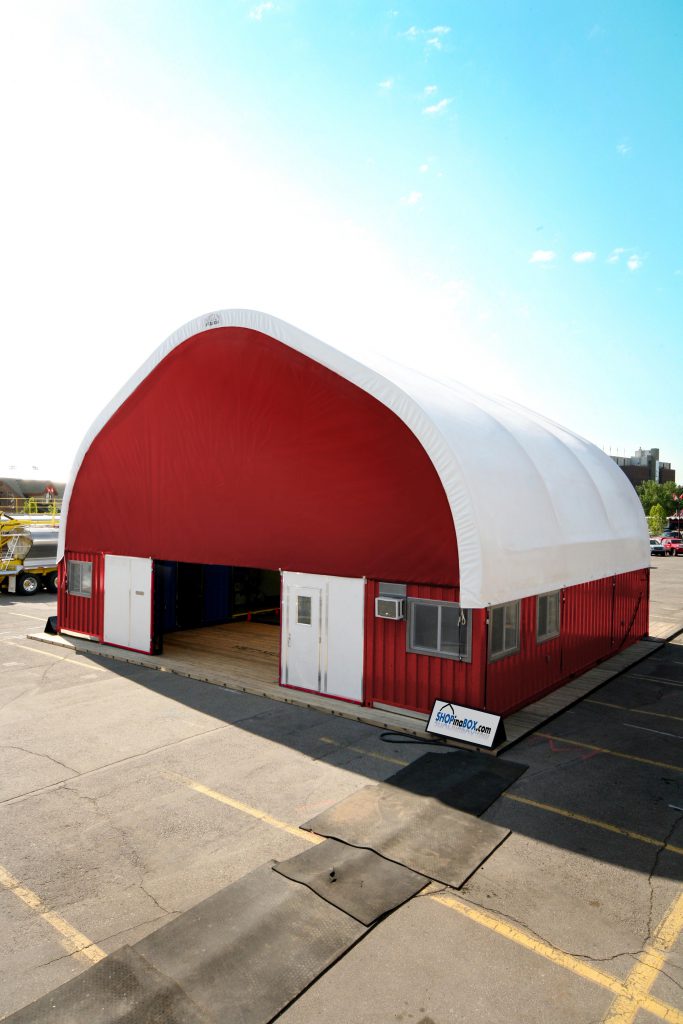
Fabric structures have become significantly more popular for industrial and commercial usage in recent years due to the wave of new technology and creativity in the design and engineering of these structures. When employed practically in any application, fabric-covered buildings in Canada are a great alternative to traditional brick-and-mortar structures. The majority provide long-lasting, permanent shelter and facilities for residential, commercial, and industrial purposes. However, because there are various fabric structure producers, it gives rise to several factors to consider when purchasing a tension fabric structure.
The material’s strength
A fabric structure in any application must provide reliable shelter compared to a traditional building because it is being used to replace a brick-and-mortar construction. The materials used to construct a fabric structure determine its strength and durability. Poor-quality metals and thin-gauge steel frames may induce buckling or excessive flexing, putting the structure at risk and leading to catastrophic building collapse. For fabric structures, galvanized steel is the best framing material, followed by high-strength aluminium, which is more lightweight. A tension fabric material consisting of polyvinyl chloride surrounds the frame.
The requirement of the foundation
The proper foundation solutions for a fabric building are determined by its location, climate, and applicational usage. Fabric structures can be built on various foundations as long as the ground is roughly level and flat. The most common foundations are concrete, wood, gravel or earth pad, but a fabric structured building can also be anchored directly into the ground using various anchoring systems. Spikes, duckbill earth anchors, lag bolts, concrete wedge anchors, and ballast bars for weight anchors are the most used anchoring devices. These materials will provide multidimensional strength to the building, allowing it to withstand tension.
Proved engineered design
Like any other structure, fabric construction involves a loss of financial investment if the structure cannot survive adverse weather conditions or long-term use. While many fabric building manufacturers tout their products’ durability and endurance, knowing that your purchase will last longer is reassuring. Fabric-covered buildings in Canada create field-tested fabric structures to ensure their effectiveness, durability, and lifespan.
Sustainability in extreme weather
One of the most appealing features of high-end fabric buildings is their extraordinary ability to withstand the effects of various weather and climates. Fabric buildings of the highest quality can withstand high winds, heavy rain, and snow loads in hazardous settings for extended periods. The galvanized steel framing can be further reinforced with a protective powder coating or electrostatic spray for added durability and lifespan. The fabric exterior is designed for optimal abrasion resistance, and snow shed. The galvanized steel framing can be further reinforced with a protective powder coating for added durability and lifespan. If these treatments are not required for your application, you can still expect your fabric structure to endure severe weather.
Meets constructing building codes
Fabric structures all meet the safety criteria of the International Building Codes (IBC) and can also be constructed to meet different area-specific building code requirements. A specially-designed fabric building may be a preferred, less expensive alternative to constructing a regular building if your site has mitigating factors that necessitate more safety and security considerations with your buildings and systems.
At ‘Pavilion Structure Canada’, we adhere to the need of our clients and their dreams of building construction. Our clients are the most worthy asset, and hence we take every step and measure to fulfil their expectations to the best. So, visit our website today to book an appointment now!
wordpress theme by initheme.com

